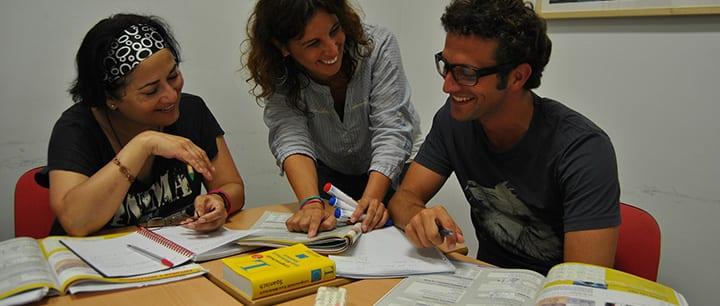Interested in learning how to speak Spanish? Get on track for success with these helpful resources, as shared by San Jose, CA tutor Gina C...
I remember sitting for countless hours in my high school Spanish class, learning verb conjugations and memorizing meaningless dialogues about what you were going to buy your Mother for Mother’s Day. I was so bored, I passed notes to my friend to pass the time. Of course, I wrote them in español just in case I got caught by el professor. I read Don Quijote and wrote an essay on it.
By the end of my senior year in high school, I was in AP Spanish, but could not carry on a simple conversation. Later, when I attended a Mexican wedding, I couldn’t converse at all. Has this happened to you? Do you feel like you have studied Spanish for many years, but cannot carry on a basic conversation? Do you want to learn Spanish conversationally or even fluently for your business or social reasons, but don’t know how or where to begin? Well forget everything you learned in high school or college Spanish class and stop aiming for perfection.
Learning a new language is not impossible, but it takes dedication and a good program. This article lists tips on how to best get your message across and what resources are available to help you learn or take your Spanish beyond “Buenos días.” I have come across many individuals who have studied Spanish in the past and want to be conversational, but are hindered by bad memories of high school classes. If your aim is to be communicative, forget all about all those grammar rules. No one cares if you make a grammar mistake or if you don’t roll your “r” sounds. You learn to speak Spanish to communicate for some real purpose; in the real world there are no contrived dialogues and no grades.
So how can you improve? If at all possible, set up your day so that you can have opportunities to speak Spanish. Even if you are taking a course, or studying online, you are going to have to go out and practice. Here are some strategies to try and resources you can use:
Immersion
Going Abroad: Going abroad forces you to speak and live the language. If you interact with the locals and not just those working at hotels and restaurants, you will have to communicate in Spanish. The other benefits are that you will gain a new perspective by learning a new culture.
Domestic Immersion: Contrary to popular belief, you do not have to go abroad to learn a language, especially when there are so many Spanish speakers in our own country. After all, that’s why you want to learn Spanish, right, to communicate with people in the US? Ideas to get you started:
- Head to the Hispanic part of town and strike up a conversation.
- Go to the local taquería and order in Spanish.
- Volunteer at a clinic, food bank, or school where there are many Spanish speakers. This will be your opportunity to put into practice what you are learning and do some good in the community.
Resources to Improve Your Spanish Skills
You have a couple of choices: the do-it-yourself (DIY) method and the “do-it-with others” method. Keep in mind that learning a language on your own is a challenge as you do not have a professional to consult with regarding any of your questions or doubts and you don’t have a partner to help hold you accountable. If you choose the DIY method, you may also want to supplement your learning with a weekly language tutor, teacher, or coach.
In the DIY realm:
- Books: There are thousands of books about how to learn to speak Spanish, and to decide which book is best for you depends on what your current skill level is, and what your goals and objectives are. Do you want to learn to speak Spanish for business, for a particular industry, for travel, or to communicate with your partner? You will want to find a book that focuses on your skills and objectives and that covers grammar as well. Many times a pronunciation aid is necessary, so you may want to consider a book that includes a CD or the phonetic pronunciation written next to the words.
- Rosetta Stone: Rosetta Stone offers a picture-based method for learning Spanish and many other languages, but it is quite expensive. The method does work and the program is good, but before laying out that much cash, ask yourself if you will really sit in front of the computer for hours clicking on pictures to learn how to say “The ball bounces,” and “The boy is riding the horse.” Studies show that adults learn best when the material is relevant and important to them. So, if you want to learn to speak Spanish for your house-building trip to Mexico, or to open bank accounts for your Spanish-speaking clients, how important is “The ball bounces” to you?
Online courses and other resources:
- Trent University Spanish Language Exercises
- Duolingo – App for iOS and Android
- MosaLingua – App for iOS and Android
- Fluencia
- StudySpanish.com
In the “do-it-with-others” realm:
- Adult Education Courses: Many high school districts offer adult education, or through the Recreation Department of a city. Try an online search for adult education in your area and you may be pleasantly surprised. The cost is typically low and you do not have to deal with complicated college enrollment and grades or difficult parking. The downside is it may be a crowded classroom and will not be tailored to your specific need, but for a budget-conscious student, it is worth checking out.
- Community College and University: Community colleges are another option for learning a language. You will have live interaction with a professor and you can ask any questions you may have and get quick feedback. The drawback here is that most students are taking the course for a grade. Emphasis will be placed on performance and correct grammar. You may sit through hours of lectures on verb conjugation and memorizing vocabulary lists.
- Private or Small-group Lessons: Want to learn Spanish quickly and effectively? A package of small group, semi-private, or private lessons is a good way to go. Make sure you are hiring someone with years of teaching experience and a credential or two to his or her name. Many people have suffered from the false hope that they can learn Spanish from someone just because he or she is a native speaker of the language. If you think about it, would you be qualified to teach somebody English? The instructor needs to know about teaching methodology, grammar, how adults learn best, and so on.
Armed with this knowledge, you can see how TakeLessons.com can be a valuable resource for you. Even if you choose the DIY realm, you can hire a tutor, teacher or coach to answer your questions, help you with pronunciation, or simply to keep you accountable.
Good luck with your studies!
 Gina C. teaches languages, including English, ESL, and Spanish, in San Jose, CA. She received her MA in Hispanic Studies, her BA in English Literature, and has over 25 years’ experience teaching English, Spanish, and Business Communication. Learn more about Gina here!
Gina C. teaches languages, including English, ESL, and Spanish, in San Jose, CA. She received her MA in Hispanic Studies, her BA in English Literature, and has over 25 years’ experience teaching English, Spanish, and Business Communication. Learn more about Gina here!
 Photo by cliccadiz
Photo by cliccadiz
Suzy S.

